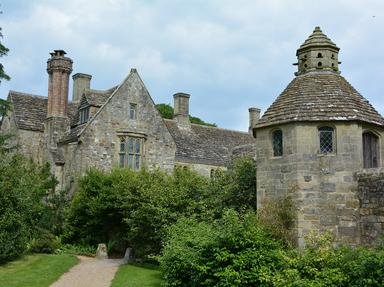Quiz Answer Key and Fun Facts
1. 'Mansfield Park' opens with an explanation of how one of the female characters "had the good luck to captivate Sir Thomas Bertram" and "be thereby raised to the rank of a baronet's lady". What was the name of this woman who went on to become the lazy and indolent Lady Bertram?
2. Lady Catherine de Bourgh, the aunt of Mr Darcy in 'Pride and Prejudice', was formidable, opinionated and had a strong belief in her own superiority. What skill was she talking about when she said "if I had ever learnt, I should have been a great proficient"?
3. In 'Persuasion', Sir Walter and Elizabeth Elliot spent a great deal of time seeking the society of an aristocratic cousin. What was this lady's name?
4. Lady Denham, a rich widow, was involved in an attempt to modernise a small seaside town into a tourist resort in one of Jane Austen's unfinished works. What name was shared by both the fictional town and the work in which it appeared?
5. In 'Pride and Prejudice', one of Mrs Bennet's closest friends and neighbours was a woman named Lady Lucas. How did this lady qualify for the title of 'Lady'?
6. Jane Austen described the Dashwood family's opinion of Lady Middleton in 'Sense and Sensibility' as "though perfectly well-bred, she was reserved, cold and had nothing to say for herself". What was the only subject of conversation that Lady Middleton showed any significant interest in?
7. The title of 'Persuasion' referred to the fact that Lady Russell had persuaded the heroine, Anne Elliot, to break off her engagement to a naval officer named Frederick Wentworth. What was Lady Russell's relationship to Anne?
8. In 'Mansfield Park', Edmund Bertram described which other character's friendship with Lady Stornaway as "the greatest misfortune of her life and mine"?
9. The former Miss Tilney, a newly created viscountess, was instrumental in obtaining her father's approval for her brother's marriage to Catherine Morland - the heroine of Jane Austen's 'Northanger Abbey'. What was her first name?
10. Lady Susan, a scheming and flirtatious widow, was the title character of an epistolary novella written by Jane Austen in the mid-1790s. What was her full name?
Source: Author
Fifiona81
This quiz was reviewed by FunTrivia editor
LadyCaitriona before going online.
Any errors found in FunTrivia content are routinely corrected through our feedback system.


